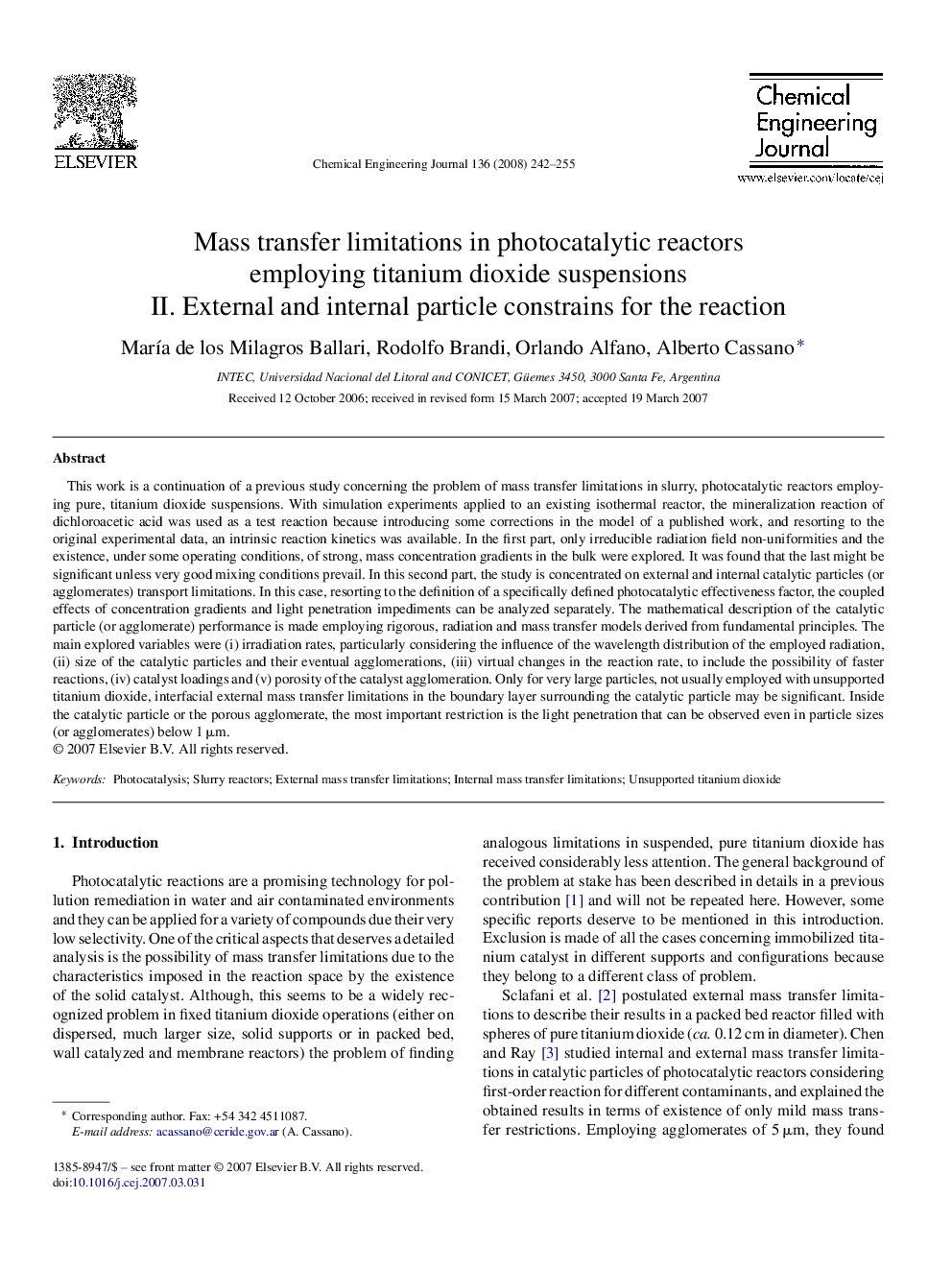| کد مقاله | کد نشریه | سال انتشار | مقاله انگلیسی | نسخه تمام متن |
|---|---|---|---|---|
| 153427 | 456527 | 2008 | 14 صفحه PDF | دانلود رایگان |

This work is a continuation of a previous study concerning the problem of mass transfer limitations in slurry, photocatalytic reactors employing pure, titanium dioxide suspensions. With simulation experiments applied to an existing isothermal reactor, the mineralization reaction of dichloroacetic acid was used as a test reaction because introducing some corrections in the model of a published work, and resorting to the original experimental data, an intrinsic reaction kinetics was available. In the first part, only irreducible radiation field non-uniformities and the existence, under some operating conditions, of strong, mass concentration gradients in the bulk were explored. It was found that the last might be significant unless very good mixing conditions prevail. In this second part, the study is concentrated on external and internal catalytic particles (or agglomerates) transport limitations. In this case, resorting to the definition of a specifically defined photocatalytic effectiveness factor, the coupled effects of concentration gradients and light penetration impediments can be analyzed separately. The mathematical description of the catalytic particle (or agglomerate) performance is made employing rigorous, radiation and mass transfer models derived from fundamental principles. The main explored variables were (i) irradiation rates, particularly considering the influence of the wavelength distribution of the employed radiation, (ii) size of the catalytic particles and their eventual agglomerations, (iii) virtual changes in the reaction rate, to include the possibility of faster reactions, (iv) catalyst loadings and (v) porosity of the catalyst agglomeration. Only for very large particles, not usually employed with unsupported titanium dioxide, interfacial external mass transfer limitations in the boundary layer surrounding the catalytic particle may be significant. Inside the catalytic particle or the porous agglomerate, the most important restriction is the light penetration that can be observed even in particle sizes (or agglomerates) below 1 μm.
Journal: Chemical Engineering Journal - Volume 136, Issues 2–3, 1 March 2008, Pages 242–255